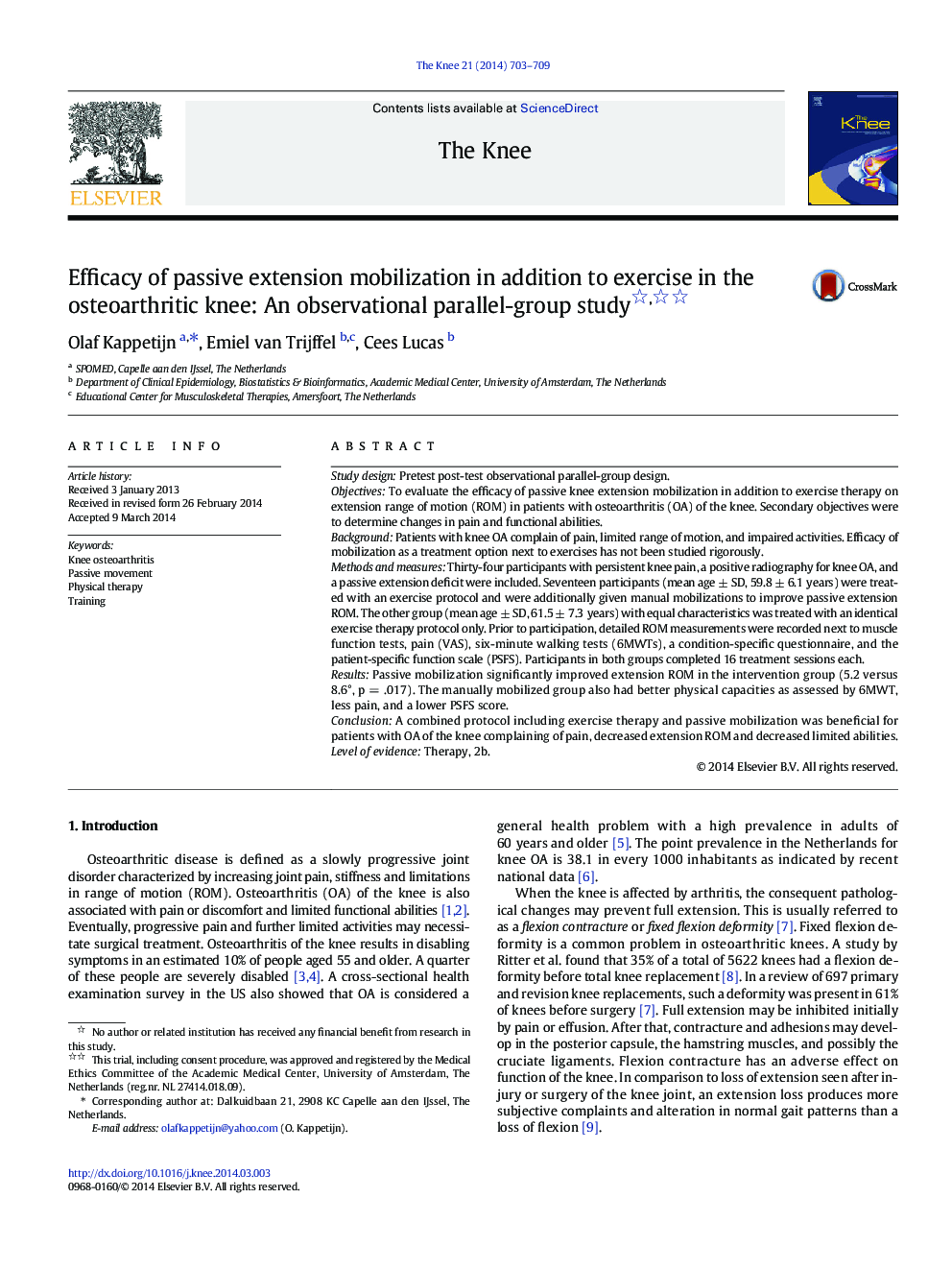| Article ID | Journal | Published Year | Pages | File Type |
|---|---|---|---|---|
| 4077461 | The Knee | 2014 | 7 Pages |
Study designPretest post-test observational parallel-group design.ObjectivesTo evaluate the efficacy of passive knee extension mobilization in addition to exercise therapy on extension range of motion (ROM) in patients with osteoarthritis (OA) of the knee. Secondary objectives were to determine changes in pain and functional abilities.BackgroundPatients with knee OA complain of pain, limited range of motion, and impaired activities. Efficacy of mobilization as a treatment option next to exercises has not been studied rigorously.Methods and measuresThirty-four participants with persistent knee pain, a positive radiography for knee OA, and a passive extension deficit were included. Seventeen participants (mean age ± SD, 59.8 ± 6.1 years) were treated with an exercise protocol and were additionally given manual mobilizations to improve passive extension ROM. The other group (mean age ± SD, 61.5 ± 7.3 years) with equal characteristics was treated with an identical exercise therapy protocol only. Prior to participation, detailed ROM measurements were recorded next to muscle function tests, pain (VAS), six-minute walking tests (6MWTs), a condition-specific questionnaire, and the patient-specific function scale (PSFS). Participants in both groups completed 16 treatment sessions each.ResultsPassive mobilization significantly improved extension ROM in the intervention group (5.2 versus 8.6°, p = .017). The manually mobilized group also had better physical capacities as assessed by 6MWT, less pain, and a lower PSFS score.ConclusionA combined protocol including exercise therapy and passive mobilization was beneficial for patients with OA of the knee complaining of pain, decreased extension ROM and decreased limited abilities.Level of evidenceTherapy, 2b.
